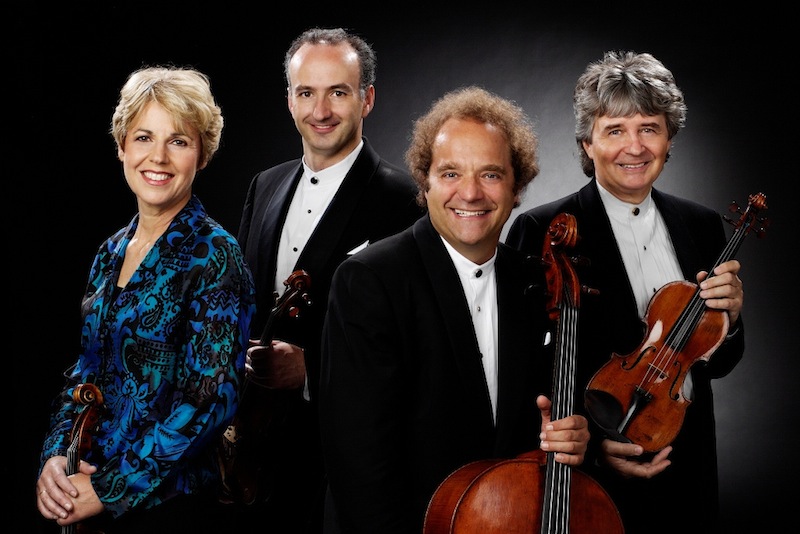Takács Quartet launches Bartók cycle with warmly moulded performance

The Takács Quartet performed music of Bartók Thursday night at Jordan Hall for the Celebrity Series.
When you think about Bartók’s string quartets, lyricism and rich sonorities and are not the traits that usually come to mind.
Leave it to the Takács Quartet to find these qualities from works better known for their ear-prickling harmonies, quick-changing meters, and blazing complexities.
In the first of a two-part Celebrity Series recital at Jordan Hall, the Takács musicians performed three of composer’s string quartets Thursday night, with luminous ensemble blend and enveloping warmth. What emerged was a nuanced, more romantic side of Bartók’s style not normally heard in the gritty textures and biting dissonances of these works.
The six string quartets, the core of Bartók’s chamber music, show a composer in dialogue with the past. Bach’s florid and learned style served as a model for the intricate counterpoint and taut palindromic forms of these pieces, and the influence of Beethoven’s own experimental late quartets is omnipresent. Motives are the bricks from which Bartók built his organic lines and structures.
Yet it was the folk music the composer collected on his travels around Eastern Europe that added a personal touch. The string quartets draw upon the obscure, ear-bending modal language and jagged, pile-driving rhythms of peasant songs and dances.
The Takács musicians are known these days for their innovative programming—later this year they will pair Schubert’s “Death and the Maiden” quartet with passages from Philip Roth’s Everyman, to be read by Meryl Streep. Yet it is Bartók string quartets that have long been their calling card, with their 1998 Decca set earning critical acclaim.
The ensemble has undergone personnel changes in the past decade—violist Geraldine Walther replaced Roger Tapping in 2005—yet uniform expression is still the hallmark of their performances. Their crisp readings of the First, Third, and Fifth Quartets Thursday night bloomed from a clear vision of the music and intimate communication between each player. It was a true conversation between friends.
The quartet’s fine blend and earthy lyricism was on display from the start of the evening. The meandering contrapuntal lines that open the First Quartet resonated with sweet, singing tone. Cellist András Fejér and violinist Edward Dusinberre played their solo passages in the third movement with tenderness. Walther’s rich viola, elsewhere, added weight.
The musicians also took the time to pull expressive phrases from the prickly timbres and percussive statements that pepper these works. The Third Quartet surfeits with spiky dissonances and all sorts of squeaks and shimmers, and the slow movements of the Fifth have the similar glassy slides and cricket-like sounds found in the composer’s Music for Strings, Percussion, and Celesta. The quartet played all with a delicate touch that sounded soft to the ear.
At times, one missed the rough Bartókian edge. For the trickling motives that make up the central movement of the First Quartet, the ensemble played with a grace that would have suited a classical minuet. Even the roiling Bulgarian rhythms in the scherzo of the Fifth had an aristocratic air and distance.
The most fiery playing came in the burly finale, where the rolling lines coalesce into waves of discordant harmonies. The folk tune that interrupted this whirlwind of notes sounded as a rusty accordion and even drew a few chuckles from the audience. Through it all, the Takács Quartet played with the spark and punch of a folk band.
The Takács Quartet will complete their Bartók cycle for the Celebrity Series April 11 at Jordan Hall. The next Celebrity Series event will feature cellist Yo-Yo Ma and pianist Kathryn Stott 8 p.m. tonight at Symphony Hall. celebrityseries.org; 617-482-2595.
Posted in Performances




